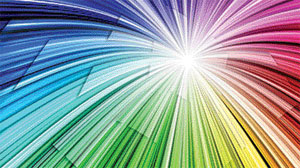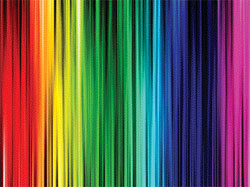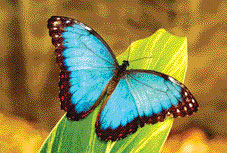|
Variety
Physical Science :
Colours that dazzle us...
We live in a wonderful world full of vibrant colours.... There are so
many beautiful colours in the environment that we cannot even imagine
seeing all the objects in
 it devoid of any colour. How fascinating it is
to see a rainbow in all its splendour. It carries all the colours of the
spectrum. Can anyone of you think of the vast ocean and the sky in a
colour other than blue or the sprawling tea estates in a hue different
to green?.Perhaps not. We are so used to the respective colours of each
object around us that we cannot really think of them in any other way.
We have learnt to depend so much on the colours around us that we even
describe certain things in life using these colours. it devoid of any colour. How fascinating it is
to see a rainbow in all its splendour. It carries all the colours of the
spectrum. Can anyone of you think of the vast ocean and the sky in a
colour other than blue or the sprawling tea estates in a hue different
to green?.Perhaps not. We are so used to the respective colours of each
object around us that we cannot really think of them in any other way.
We have learnt to depend so much on the colours around us that we even
describe certain things in life using these colours.
How do we see colours and how are these different colours formed, you
may wonder. The colours we see are a property of light. The white light
consists of many colours: red,orange,yellow,green,blue,indigo and violet
shaded into each other. All these colours represent the light spectrum.
The composition of light was explained by Sir Isaac Newton over 300
years ago.

All the objects around us absorb certain colours of the spectrum and
reflect others. The reason we see various objects in different colours
is because our eyes can see only the colours reflected by each of these
objects. That is why we see an apple or a cherry as red because it
absorbs all the colours in the spectrum except red. It is reflected and
so we see it. It is the same with an object that is totally green such
as a blade of grass or a leaf of a tree. How are certain objects black
or white in colour ? The same theory of absorption and reflection
applies here too. For example, a sheet of paper appears white because it
 reflects all the colours and absorbs none. It is the opposite with
black. Objects that appear black such as coal absorb all the colours of
the spectrum and so have no colour left to reflect. The object can only
be seen by contrast with the surrounding objects. Black is in reality,
the absence of colour. reflects all the colours and absorbs none. It is the opposite with
black. Objects that appear black such as coal absorb all the colours of
the spectrum and so have no colour left to reflect. The object can only
be seen by contrast with the surrounding objects. Black is in reality,
the absence of colour.
We are highly fascinated with the different hues the sky becomes at
sunset. We usually see the sun as a mighty red ball at this time of day.
Why is it so? Because, at dusk the rays of the Sun have to cross
thousands of miles of the atmosphere at an angle.
Due to this diagonal path ,blue and violet rays are scattered by tiny
dust particles that act like filters. Consequently only the red rays
reach us. Our eyes are most sensitive to the colours, red ,green and
blue.
Here is an interesting experiment you can do to see the magic of
colours. Make a cardboard disc and paint it with all the colours in the
colour spectrum. When it is spun rapidly we can no longer distinguish
the separate colours. If the order of colours in the disc are carefully
chosen (starting with red use violet, indigo, blue,green,yellow and
orange), when spun rapidly, they would blend together and look white.
Facts
Additive synthesis: blue, green and red are the primary colours of
light. When lights of these colours are mixed all the colours can be
obtained including white.
Subtractive synthesis:cyan (greenish blue),yellow and
magenta(purplish red) are the secondary colours. Each subtracts a
primary colour from light . |

